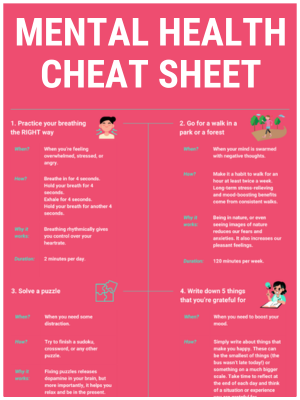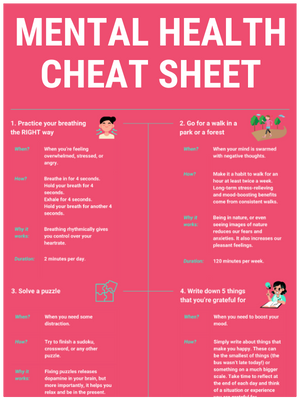Life seems chaotic and unsafe when we let our emotions rule our lives. We all have emotions, and we handle them in different ways. But a frustrating day at work shouldn’t impact your loved ones at home. If you aren’t adept at compartmentalizing your emotions, they will likely have more control over your life than you would like.
Things happen beyond your control, but you can thrive if you compartmentalize your emotions effectively. This skill also means that your emotions don’t cause a knock-on effect and send your mindset and life spiraling down like dominos.
This article will outline emotions and why learning how to compartmentalize them is so important. We will then discuss 5 tips on how to compartmentalize your emotions.
Contents
What are emotions?
We often confuse emotions with feelings.
The American Psychological Association defines emotions as “a complex reaction pattern, involving experiential, behavioral and physiological elements.”
Often emotions lead to feelings. It’s feelings that we express to the world. Whereas emotions lay hidden from the general view. We may recognize when another person appears sad, but we are unlikely to detect the complex emotions giving rise to these feelings.
Many of us are good at bottling up our emotions, perhaps because we don’t quite understand them ourselves.
Our emotions dictate our behavior and actions. They interfere with how we show up and interact with others.
The emotional psychologist Paul Ekman identified 6 primary emotions:
- Happiness.
- Sadness.
- Fear.
- Anger.
- Surprise.
- Disgust.
In 1999 other emotions were added to the list, including:
- Embarrassment.
- Excitement.
- Contempt.
- Shame.
- Pride.
- Satisfaction.
- Amusement.
💡 By the way: Do you find it hard to be happy and in control of your life? It may not be your fault. To help you feel better, we’ve condensed the information of 100’s of articles into a 10-step mental health cheat sheet to help you be more in control. 👇
The benefits of compartmentalizing emotions
Given the nature of emotions, we are all affected differently by external factors. What may trigger an emotional response in you may not have the same effect on me.
We can’t control how we innately respond to a trigger, but we can control how we deal with the sensation of this response.
When you learn to compartmentalize your emotions, you get to the crux of what is causing your emotional response. Getting to the bottom of things often prevents your emotions from taking the helm and steering you into troubled waters.
People who can compartmentalize their emotions are less likely to suffer from catastrophizing and spiraling negative thoughts. They are also less likely to take their mood out on other people, which means they have healthier relationships.
This fascinating study about the effect of emotional intelligence on decision-making shows that those with high levels of emotional intelligence can compartmentalize their emotions and recognize them as irrelevant to the decision-making process. They don’t allow their anxiety to impact their decision-making.
If you don’t want your emotional response concerning one aspect of your life to influence everything, you must learn to compartmentalize your emotions.
5 ways to compartmentalize emotions
When you learn to compartmentalize your emotions, you can sit with your emotions, accept them and not succumb to their potential destruction.
Here are 5 ways to help you compartmentalize your emotions.
1. Identify your emotions
To compartmentalize your emotions expertly, you must learn to identify them. Ignoring emotions pushes them down until something inside you bursts, and you erupt.
Think of the anguish of emergency workers who deal with death and devastation. Regardless of how they feel inside, they need to be able to function professionally to carry out their job.
In my old job as a detective, I dealt with many situations that invoked sinister emotions. Once I was away from the situation’s urgency, I could tap into myself and recognize my emotions. Sometimes I engaged in a critical incident debrief and received counseling from experts to help identify the complex emotions from such events.
The point here is that it’s essential to identify emotions if you want them to settle and allow you to pack them away.
2. Give your emotions a release
As well as identifying emotions, it can be helpful to give emotions a release. You can release emotions through many different processes. Releasing these emotions does not mean they are gone. Instead, it helps you acknowledge and recognize them and stops them from sneaking into other areas of your life.
You can release your emotions in several practical ways:
- Keep a journal.
- Talk with a counselor.
- Therapeutic yoga.
- Dance.
- Sing.
- Join an amateur dramatics club.
In the book The Body Keeps the Score by Dr. Vessel van der Kolk, he speaks of the importance of releasing emotions to help manage post-traumatic stress disorder.
3. Erect boundaries
Once you learn what triggers certain emotions in your mind and body, you can control your exposure to these triggers by using boundaries.
You can use boundaries in conjunction with being aware of your emotional bandwidth. For instance, if you have a fraught relationship with a family member, you should avoid spending time with them if you are already running on empty.
Similarly, scheduling downtime or a cleansing activity is an excellent idea to help compartmentalize the complex emotions of spending time with people who trigger you.
If you don’t do this and go straight into another social environment, you may allow your triggers to impact how you interact with loved ones.
If you want more tips in this area, here’s our article on how to set boundaries with other people.
4. Engage in therapy
Interestingly, many people struggle to identify and deal with emotions. Alexithymia refers to such a condition. It’s not that the emotions aren’t there; it’s just that they may have been raised in a chaotic environment and have stopped trusting their intuition.
These emotions aren’t intentionally compartmentalized. They are buried in such a manner that causes pain and suffering.
If you identify with this, I strongly urge you to seek therapy. A therapist will help you slowly untangle the mass of emotion hidden within your body. A professional will help you unpack and then repack your emotions to make you happier and healthier.
5. Meditate
Yesterday, I almost succumbed to the domino effect. One little thread of anxiety started unraveling, and everything I touched seemed to fall apart before I knew it.
I lay down on my spikey shakti mat and listened to a 10-minute guided meditation audio. This simple reset helped me approach the rest of the day calmly and comfortably. It allowed me to draw a line from my morning error and not let it infiltrate the rest of the day. I went from frustrated and panicked to accepting and calm.
We often don’t give ourselves the grace to stop and check in with ourselves. All it takes is 10 minutes.
It doesn’t have to be meditation. If you feel yourself bubbling over, can you remove yourself from the situation and take a short break? Go for a walk, get some fresh air and reset. Breathe the emotion out and breathe in serenity.
💡 By the way: If you want to start feeling better and more productive, I’ve condensed the information of 100’s of our articles into a 10-step mental health cheat sheet here. 👇
This Cheat Sheet Will Help You Be Happier and More Productive
Thrive under stress and crush your goals with these 10 unique tips for your mental health.
Wrapping up
Emotions are part of being human. As adults, our happiness and success are congruent with our ability to compartmentalize our emotions. Being able to compartmentalize your emotions helps you make better decisions and be more in touch with your inner self.
Is there anything you do to help compartmentalize your emotions? I’d love to hear from you in the comments below!



